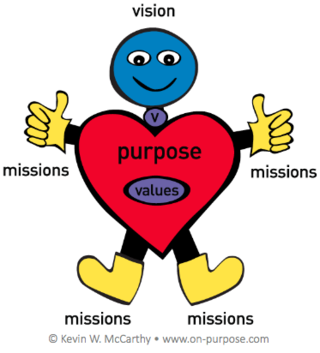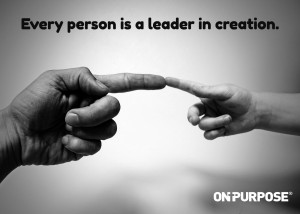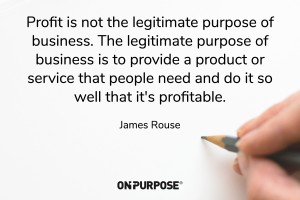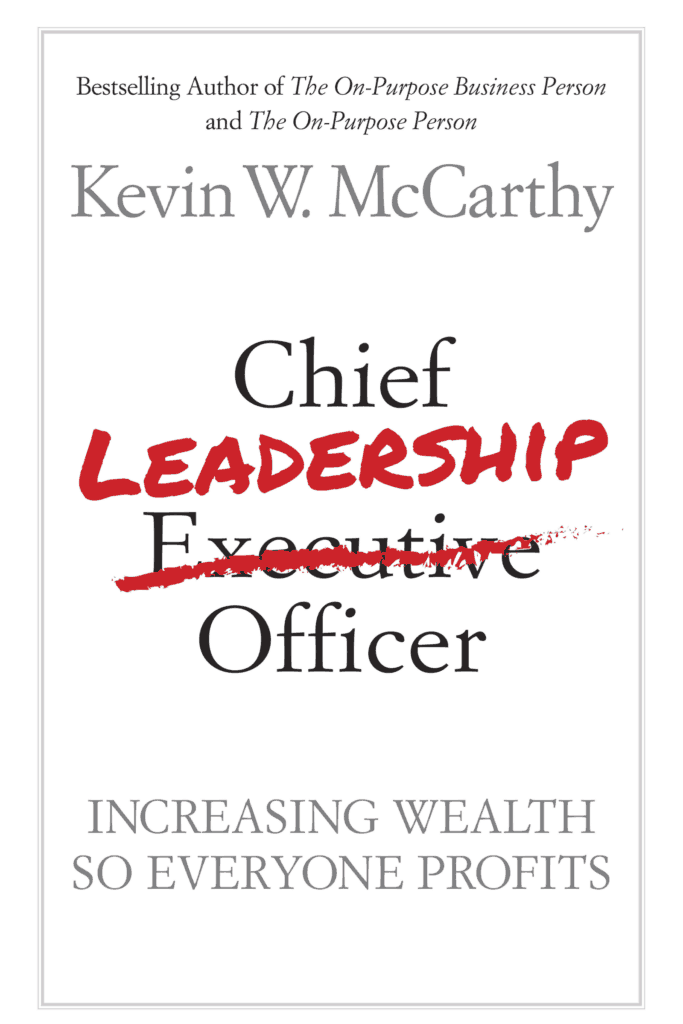In this On-Purpose Minute we’re exploring one of the greatest hidden impediments to living a better life: confused language, in general, and—specifically—the words of strategy and planning. Purpose, vision, and mission are used synonymously though they are not the same. Each has a unique quality, capacity, and meaning.
Each strategic term of Purpose, Vision, Mission, and Values answers a  specific question and speaks to a distinct aspect of personal and organizational strategy.
specific question and speaks to a distinct aspect of personal and organizational strategy.
Purpose: Why do I exist? (Being: Identity and worth)
Vision: Where am I going? (Seeing: Direction and dreams)
Mission: What do I do? (Doing: Planning and action)
Values: What is important? (Choosing: Decisions and importance)
On-Purpose, therefore, is when your heart, head, and hands are aligned and integrated with the highest values.
On-Purpose® is both a process and state of being strategically integrated while giving practical expression to who you truly are. You prosper others and yourself—it’s a win–win. As a result, you can’t help but make a difference.
Too many of us live our lives desperately seeking “to make a difference.” It is a noble aspiration, but a misguided approach. When the focus is the result and not the cause, then we’re almost sure to get distracted and detoured.
Instead, focus on becoming the personal leader of your life.
Know who you are—really.
- Write your 2-word purpose statement.
- Invest the time to clarify your vision and missions.
- Specify your values—the boundaries and guidelines of your life that matter most to your overall health and well-being.
Need help? Explore The On-Purpose Shop for books, tools, coaching, and more.
Decay and destruction are easier than growth and construction. Being on-purpose is work … but consider the alternative. And that, dear reader, is why life is so hard.
 Rock–paper–scissors chart (Photo credit: Wikipedia)
Rock–paper–scissors chart (Photo credit: Wikipedia)
When there isn’t agreement on the definitions of Purpose, Vision, Missions, and Values—but plans are made with them—then those plans are confused. Confused plans result in under-performance. Under-performance calls for a review and update of the plans. Rock–Paper–Scissors!
Can a good old game of Rock–Paper–Scissors help you to unlock the difficulties of your life?
Yes!
- Rock breaks scissors.
- Scissors cut paper.
- Paper covers rock.
We know the rules and the game.
The problem isn’t the process, tools, or sincerity of the people. The problem is outside of the system. The terms of leadership and strategy are confused so the entire “game” is rigged against you to almost always fall short.
Have you ever asked yourself, Why am I so frustrated and overwhelmed? Do you think you’re crazy or something is wrong with you?
If you’re crazy, then you don’t know you’re crazy. If you think you’re crazy, then you’re sane enough to know you’re not going mad. All this, therefore, means you aren’t crazy—just stressed, worn, and detoured from the life of your dreams but not the life of your reality.
When the world within us is confused, directionless, and searching, to assume the world outside of us is going to magically provide what we’re looking for is stepping on the unhealthy path of voluntary victimhood.
To make sense of the world about you, make sense of your life.
Start with consistent definitions of purpose, vision, missions, and values. Then, answer the questions above. The On-Purpose Person provides the method and steps to lead your life on-purpose.



